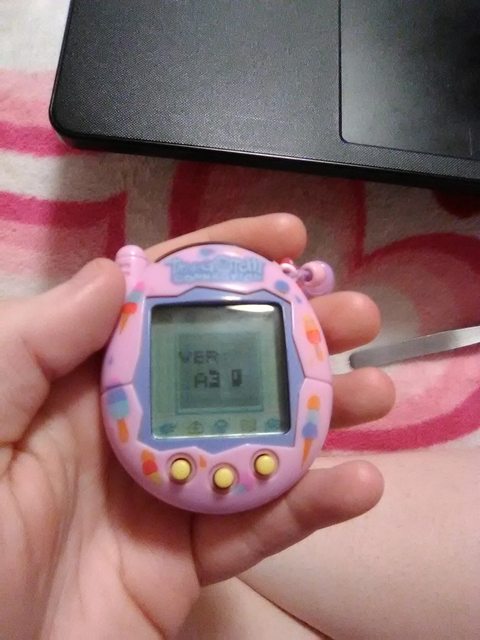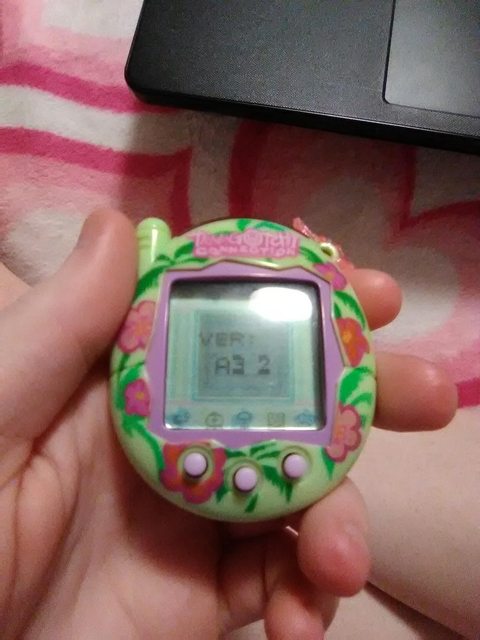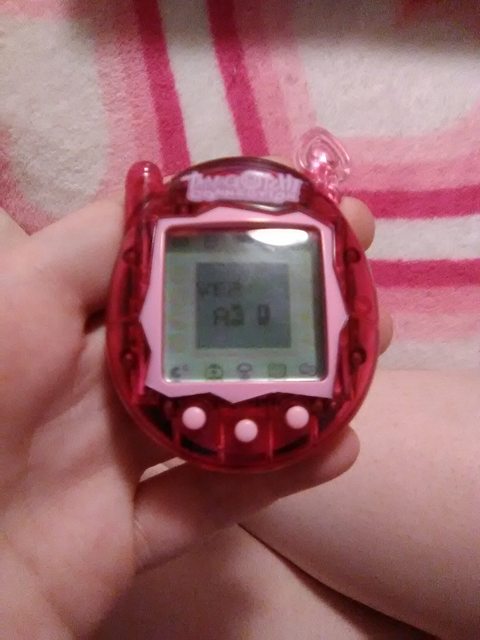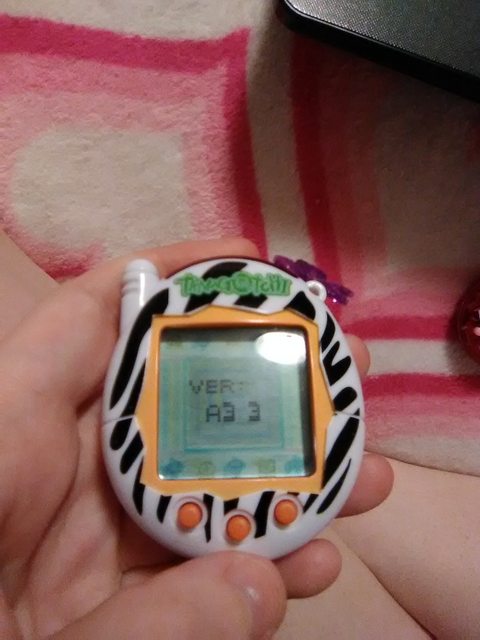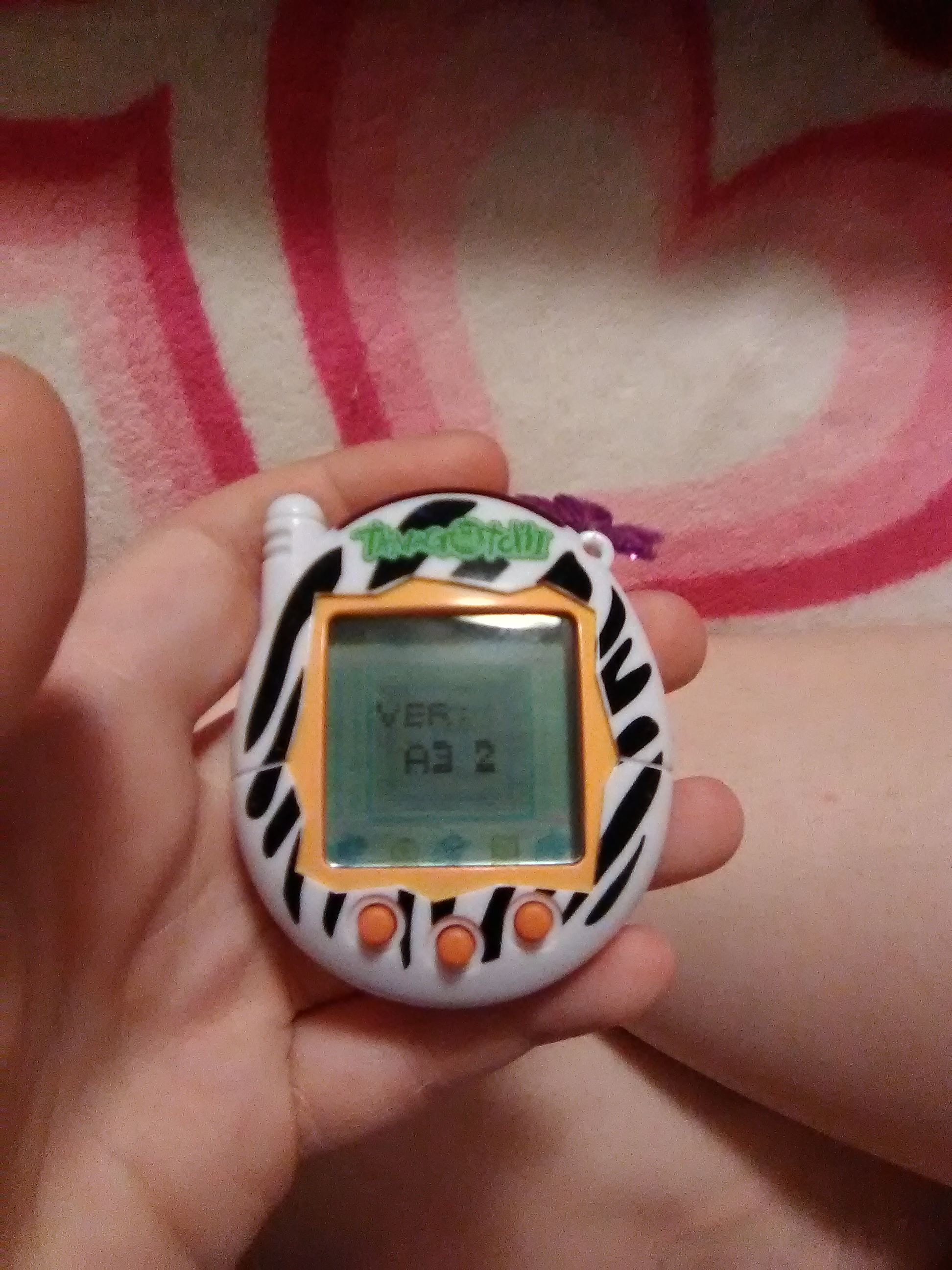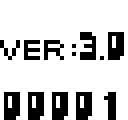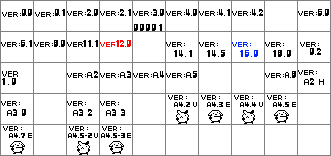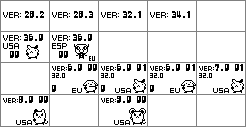Time for perhaps the most bizarre update I've given - some new developer features have been discovered!
All this information comes from rjalda100, who discovered and tested the feature while trying to perform the region change procedure on a V1.
For those unfamiliar with region changing, it's a process you can perform on the American connection models in a similar manner to activating the debug mode - instead of shorting the JP3 solder jumper on the circuit board, however, JP1 and JP2 are shorted instead. I'm unsure about what happens if only one of these two jumpers are shorted; it'll be something to investigate in the future.
As Pirorirotchi demonstrated on page 3, region changing has the effect of switching the ROM version that's used with a different one - the data your Tamagotchi uses is changed from the data used in the American ROM to one used by European models. This isn't necessarily hugely remarkable by itself, though this recent discovery has given us new knowledge about what this feature was used for.
A few days ago rjalda100 was attempting to compare the two ROM versions of an American V1 - before region changing, the ROM version was found to be 4.2. After region changing and ROM testing again, the following screen was shown instead of what was expected:
This ROM version has never been observed before, and until this point all of the Japanese and worldwide releases in the Connection / Plus series used even integer version numbers - 0.0, 2.0, 2.1, 4.0, 4.2, 6.1, 8.0 and so on. The numbers at the bottom of the screen are also unfamiliar, and their purpose is unclear. I had speculated in the past that there could be entirely new and unknown versions hidden behind the region change feature, so I guess this speculation was proven correct. I had also speculated that odd integer versions were reserved for developer versions - would this speculation be proven correct too?
Upon resetting the Tamagotchi, instead of being greeted by an egg, the time setting screen is shown instead. Sure enough, the date format that was used by this version was Day / Month, as would be expected after switching to a European ROM version. This screen is followed immediately by the naming screen despite no egg having hatched. After this was an entirely new screen with the options "BOY" and "GIRL". Selecting a gender will finally show you the Tamagotchi you'll be raising:
A Burgertchi
Actually, more accurately, the Burgertchi will raise itself. From this point onwards, the only button which functions is the B button - only the standard Tamagotchi view and the clock screen are accessible. Burgertchi does all the cooking and cleaning by itself - if it's hungry, it eats automatically (aptly, it eats a burger). If it makes a mess, it cleans it up. It flicks between a bunch of different animations, too.
I'm not really totally sure what the purpose of this feature is, or if there's anything else that's unique about this ROM version, but as far as I can tell it's some sort of demo mode. Why Burgertchi? No idea. But I can see this sitting behind a screen in a store, demonstrating what a Tamagotchi looks like without actually requiring constant care and attention.
Hopefully, new discoveries like this will continue being made in the near future! The region change mechanic is a truly interesting one which may reveal entirely new Tamagotchi modes to us.




